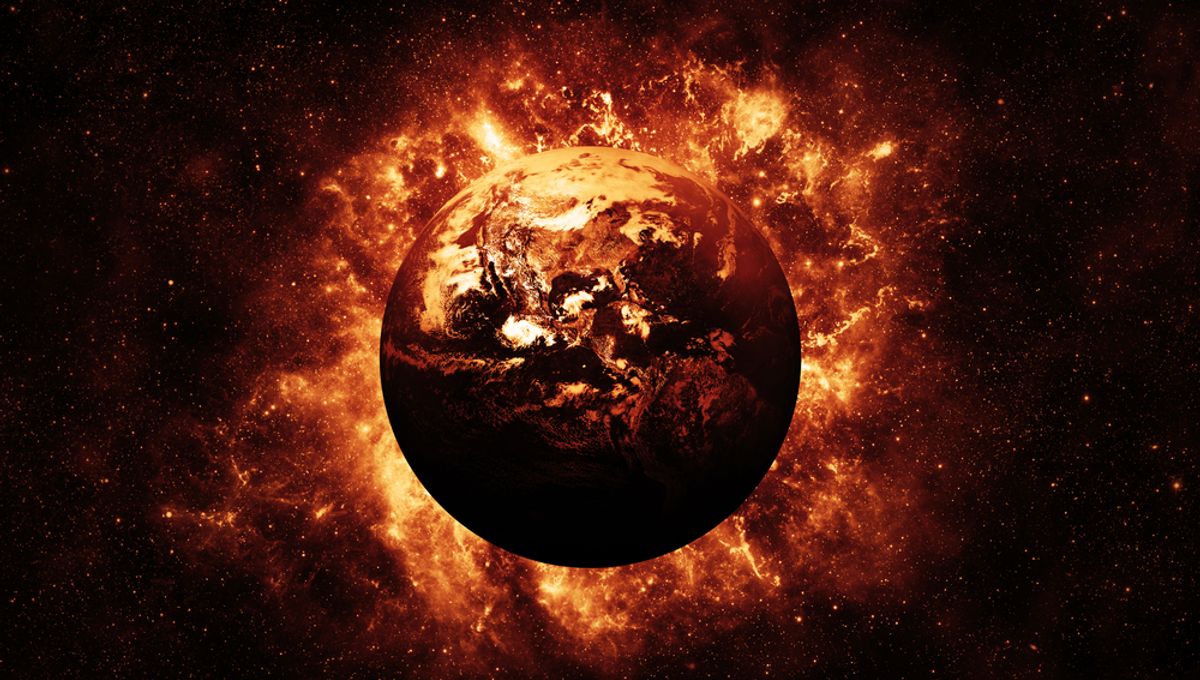
Predicting the future is a risky business in science, but if we are looking at the long-term evolution of the Solar System, astronomers and planetary scientists have a reasonable idea of how that will pan out. It’s not like we know what will happen at 10:04 pm on November 12 in the year 88,000,001,955. But statistically, we can expect certain events to take place.
Our Sun is a G-type star currently in the so-called main sequence. This means that it is fusing hydrogen in its core turning it into helium. It is currently middle-aged, having been shining for about 5 billion years. What happens next for the Sun has been seen in many other stars.
Hotter, Bigger, And Redder
Over the next 5 billion years, the Sun will get hotter. The process will be slow, but will certainly affect the Solar System. The Earth will be affected in so many different ways. An increase in temperatures will lead to an increase in weathering of silicates, which will slow down the carbon cycle. This will affect many, but not all, plants, but those remaining won’t stay there for long. Eventually, there will be no more plants and the food chain will collapse. That could happen in about 600 million years.
The microbial lifeforms surviving on any such planet might not have an enjoyable time either. Within a billion years, the Sun will have brightened by 10 percent, causing a runaway greenhouse effect leading to the evaporation of all oceans. After that, in the intervening billions of years, plate tectonics and the whole carbon cycle will stop, and the Earth will be a new Venus. A world hot enough to melt lead. And so far, the Sun has only been getting brighter. Soon, it will be getting bigger too.
As the Sun runs out of hydrogen to fuse at its core it won’t be in equilibrium any longer. The energy released by nuclear fusion balances out the weight of the Sun. Without fusion, the core will begin to contract, bringing new hydrogen to a shell-shaped region with temperatures and pressures high enough to fuse it. This process has a dramatic effect on stars like the Sun. Their outer layer expands dramatically. They have become a Red Giant. When it’s the Sun’s turn for this, it will be wide enough to expand into the orbit of Mercury and Venus, reaching close to Earth.
Mercury Might Be Gone Before Then
Now, a caveat. There is a small probability that the smallest planet might start a cosmic game of pool before the Sun decides to eat it. In the last several billion years, the eight canonical planets and the thousands of minor bodies in the Solar System have orbited the Sun without too much excitement. But there is a chance that all of this might change in the next 5 billion years. And at the center of this orbital drama, there’s Mercury. There is a 1 percent chance that the little planet might be pulled out of its current orbit before the Red Giant phase. This leads to a whole array of scenarios, from a collision with Venus and even Earth, to being launched into the Sun, or even thrown out of the system completely.
There is no precise solution to such a complex gravitational problem, but different approaches to simulating future scenarios, with different assumptions about the major and minor players that will have a role, have shown time and time again that the stability of the Solar System cannot be taken for granted.
The End Of The Solar System
Losing one planet may be regarded as unfortunate; losing eight looks like carelessness. Earth and Mars likely will spiral into the Sun, while the rest of the planets will be pushed outwards. Red giants’ outer layers are so loosely held by the gravity of the star that they begin to blow away, forming a planetary nebula. The Sun will lose mass and the gas giants will be on wider and wider orbits, getting close to doubling their distance to the Sun.
The Sun will eventually blow away all its layers revealing its degenerate core, a new stellar object we call a white dwarf. Having lost a huge chunk of its mass, the white dwarf Sun will not be able to hold onto the remaining planets forever. A star getting too close would be enough to disrupt at least three out of four of the giants, leaving maybe just Jupiter there. Simulations say that such an encounter will happen within 30 billion years, leading to losing three planets within 10 billion years.
The simulation shows that the last planet might stick around for quite a long time, but it will eventually be pushed out through encounters with other stars. Simulations have offered up a wide range of timeframes, up to 100 billion years. That is much longer than the current age of the universe (about 13.8 billion years).
Maybe in that far future, an alien astronomer will spot a white dwarf losing its only distant planet and wonder if life had once benefited from the dead star’s light.
Source Link: How Will The Solar System End?